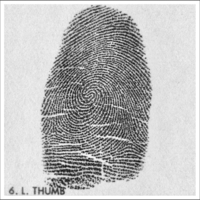2013NREUP
From Classes
(Difference between revisions)
HelmutKnaust (Talk | contribs) (→Summer Research Experience for Undergraduates (June 10 - July 19, 2013)) |
HelmutKnaust (Talk | contribs) (→Under Construction) |
||
| Line 1: | Line 1: | ||
==Summer Research Experience for Undergraduates (June 10 - July 19, 2013)== | ==Summer Research Experience for Undergraduates (June 10 - July 19, 2013)== | ||
===Under Construction=== | ===Under Construction=== | ||
| − | Sponsored by the ''Mathematical Association of America'', funded by the ''National Security Agency'' (H98230-13-1-0270) and the ''National Science Foundation'' (DMS-1156582). | + | [[image:MAA_logo.jpg|left]]Sponsored by the ''Mathematical Association of America'', funded by the ''National Security Agency'' (H98230-13-1-0270) and the ''National Science Foundation'' (DMS-1156582). |
| − | + | ||
*'''Project Director.''' Helmut Knaust | *'''Project Director.''' Helmut Knaust | ||
Revision as of 12:18, 24 April 2013
Summer Research Experience for Undergraduates (June 10 - July 19, 2013)
Under Construction
Sponsored by the Mathematical Association of America, funded by the National Security Agency (H98230-13-1-0270) and the National Science Foundation (DMS-1156582).
- Project Director. Helmut Knaust
- Project Description. Five undergraduate students majoring in Mathematics will participate in an intensive six-week summer research program on wavelets.
- The first group of students will investigate whether the FBI fingerprint algorithm [1] can be adapted to other classes of similar images such as facial portraits. Historically the adoption by the FBI of a compression algorithm for storing fingerprints digitally was the first major "applied" success of the wavelet research community. The algorithm is derived from the general JPEG2000 compression algorithm, but cleverly exploits the special character of the images to be processed by selecting a particular wavelet package and quantization scheme, thereby achieving superior results for fingerprint compression compared to Fourier or more general-purpose discrete wavelet transformation techniques.
- The second student group will research the topic of image fusion. Fusing high resolution gray-scale satellite images with lower resolution multispectral images is of major interest to geographers using remote sensing, in particular to study food production. Some earlier fusion techniques did not use wavelet techniques, but recently discrete wavelet transform methods have been successfully employed [2,3]. The major idea is to replace certain portions of the transformed gray-scale image by corresponding portions of each channel of the transformed color image. The results are superior to those simply using resampling techniques for multi-spectral images. The students will study various fusion techniques, try to find other possible replacement and implementation schemes, and investigate methods to compare the quality of fusion results.
- References.
- J.N. Bradley, C.M. Brislawn, T. Hopper. The FBI Wavelet/Scalar Quantization Standard for gray-scale fingerprint image compression. SPIE, Vol. 1961, Visual Information Processing II (1993), pp. 293-304.
- Shutao Li, James T. Kwok, Yaonan Wang. Using the discrete wavelet frame transform to merge Landsat TM and SPOT panchromatic images. Information Fusion 3 (2002) pp. 17-23.
- Zhenhua Li, Zhongliang Jing, Xuhong Yang, Shaoyuan Sun. Color transfer based remote sensing image fusion using non-separable wavelet frame transform. Pattern Recognition Letters 26 (2005), pp. 2006-14.
- David K. Ruch & Patrick J. Van Fleet. Wavelet Theory: An Elementary Approach with Applications. Wiley (2010).
- Patrick J. Van Fleet. Discrete Wavelet Transformations. Wiley (2008).



